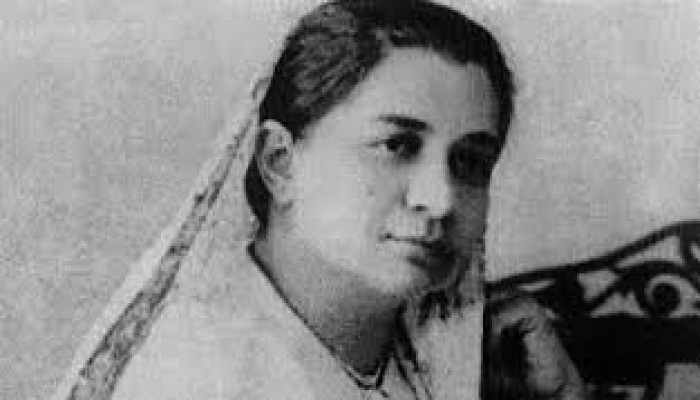The Story of the Brave Daughter of India who Unfurled the Indian Flag Abroad
- In History & Culture
- 09:09 AM, Aug 10, 2020
- Jahnvi Sharma
The Indian Independence Struggle brought about a revolution in India and can also be viewed as a movement where women played a crucial role. Among the most prominent and fearless freedom fighters of India was Madam Bhikaji Rustom Cama, who was born in a Gujrati-Parsi family and was deeply influenced by her father Mr. Sorabji Framji Patel who was a merchant and philanthropist. At an early age, she was drawn towards socio-political issues and the freedom movement. She became a popular voice fighting for the nation in various political circles.
In 1885, she married Rustomji Cama, who was a lawyer and had a soft corner for the British. Rustomji Cama believed that the British Raj was necessary for India, while Madam Bhikaji Cama strongly voiced her views against the tyrannical British Raj which mercilessly exploited India for its own profit. Their strong ideological differences led to their separation.
Disheartened with the collapse of their marriage, Madam Bhikaji Cama engaged more and more in philanthropy and social activism. She also helped the victims of the bubonic plague in Mumbai in 1896 and herself became infected but fortunately, she survived. The plague impacted her health and she was advised to relocate to Europe for recuperation.
In 1902, Madam Bhikaji Cama left India and relocated to London, and her journey in the national movement for freedom began. In London, she was introduced to Shri Dadabhai Naraoji, who himself was a critic of the British Raj and its economic policy for India. They began working for the Indian National Congress and in the process, she was introduced to Shyamji Krishna Varma and Lala Har Dayal who were revolutionary leaders. The British got a whiff of her nationalist and revolutionary activities. They asked her to sign a statement to refrain from nationalistic activities in return for relocating to India; which she outrightly refused.
Madam Bhikaji Cama settled in Paris and found the Paris Indian Society, along with Munchershah Burjorji Godrej and Singh Rewabhai Rana. She continued to participate in the Indian Independence Movement by publishing nationalist and revolutionary literature, including Bande Mataram and Madan’s Talwar. Through her ideas and philanthropy, she was able to contribute to the freedom movement from abroad.
On 22nd August 1907, 40 years before India gained independence, Madam Bhikaji Cama unfurled the Indian flag of Independence in Stuttgart, Germany at the International Socialist Conference. She vociferously spoke against the British Raj in India and highlighted the gross human rights violations, tyranny, and exploitation by the British in India. She also spoke against the British economic policy which led to the devastating famine in India.
The tricolor flag was designed by Madam Bhikaji Cama and Shyamji Krishna Varma. The Green stripe had eight lotuses which represented the eight provinces of India before Independence. The Yellow stripe had Vande Matram written across it in Devanagari script and the red stripe had a half Moon on the right and the Sun on the left, representing the religious harmony and diversity of India. The three colours represent Islam, Hinduism and Buddhism respectively. In 1914, The Indian Independence Flag was adopted as the emblem of the Indian Independence Committee, popularly known as the Berlin Committee. The flag was later brought to India by Indulal Yagnik. The flag unfurled by her in Germany, later on, inspired the Indian National Flag and is now displayed in the Maratha and Kesari Library, Pune.
In January 1962, on India’s 11th Republic Day Celebrations, a commemorative stamp was issued to honour her by the Indian Post and Telegraphs Department. The Indian Coast Guard commissioned a Priyadarshini-class fast patrol vessel ICGS Bhikaji as a tribute to Madam Bhikaji Cama. Several Indian cities have localities and streets named after her.
Madam Bhikaji Cama’s grit, determination, and fearless opinions led to the birth of a glorious, Independent nation and India shall forever be grateful to her for her revolutionary ideas and contribution to the Indian Independence Movement.
Image Credits: Cultural India







Comments